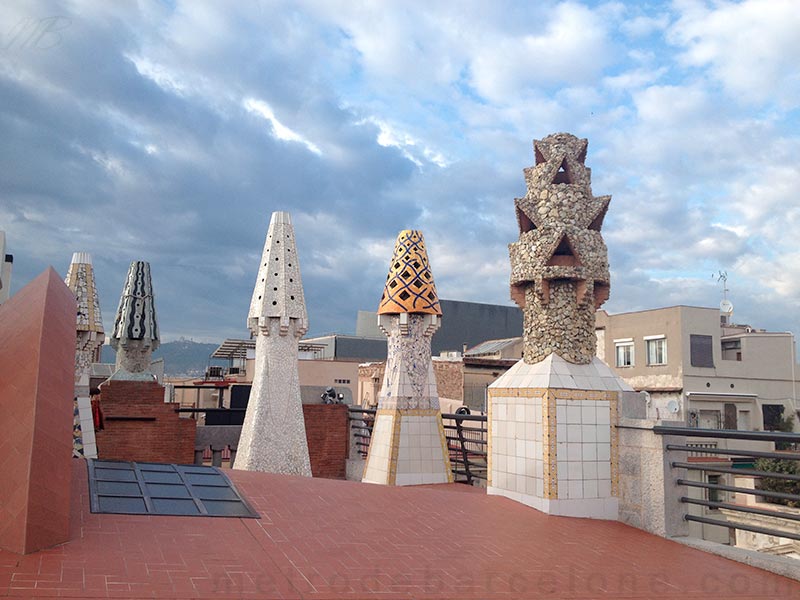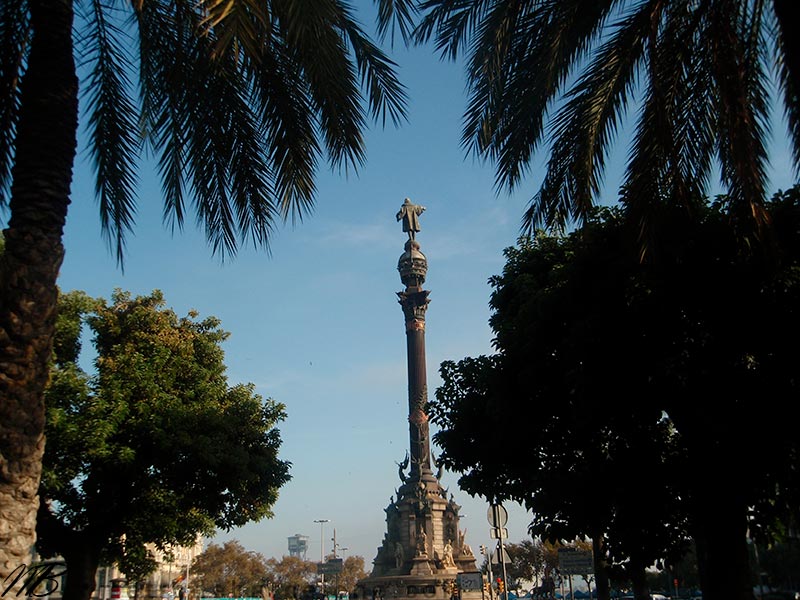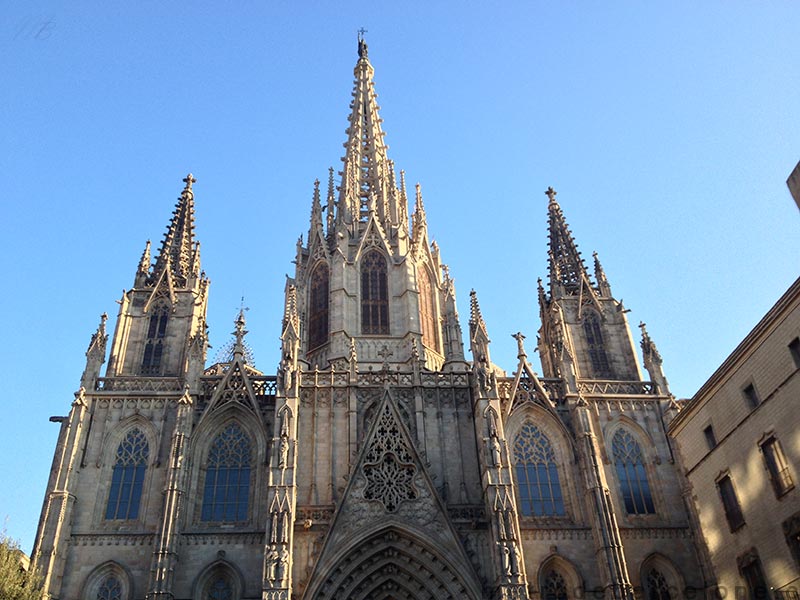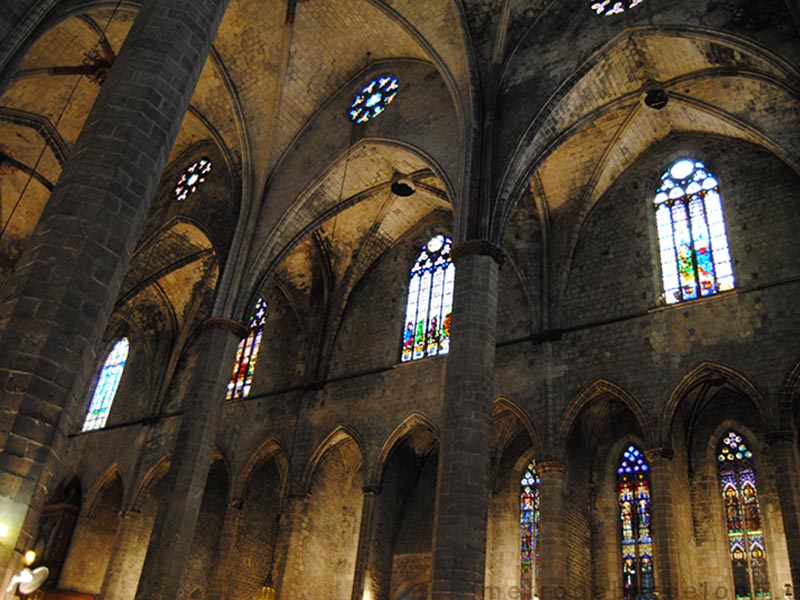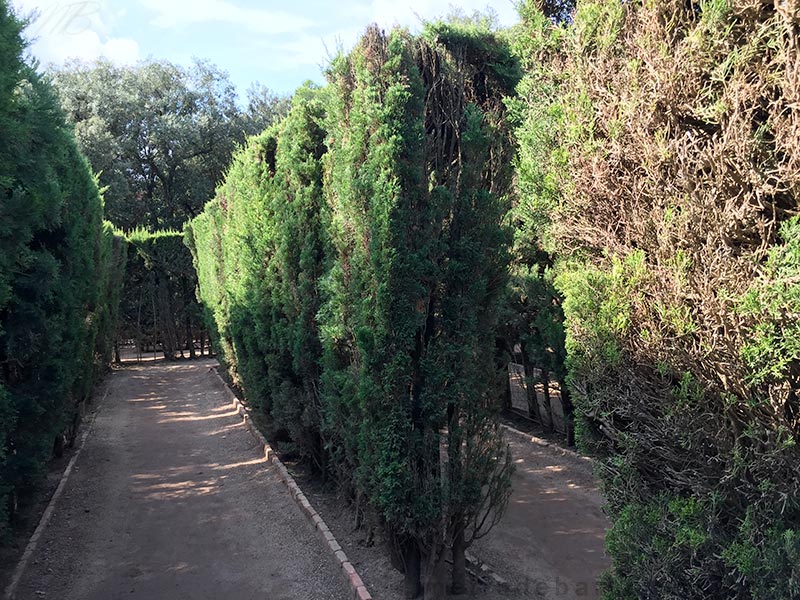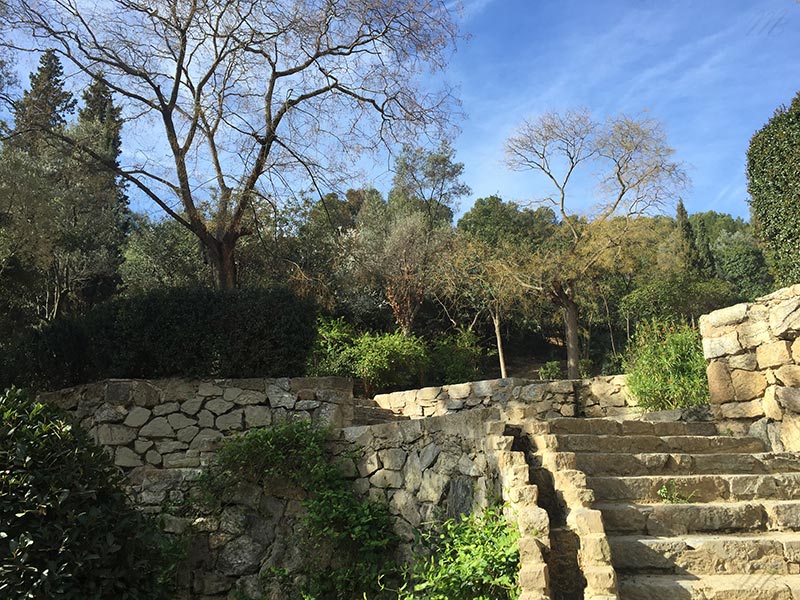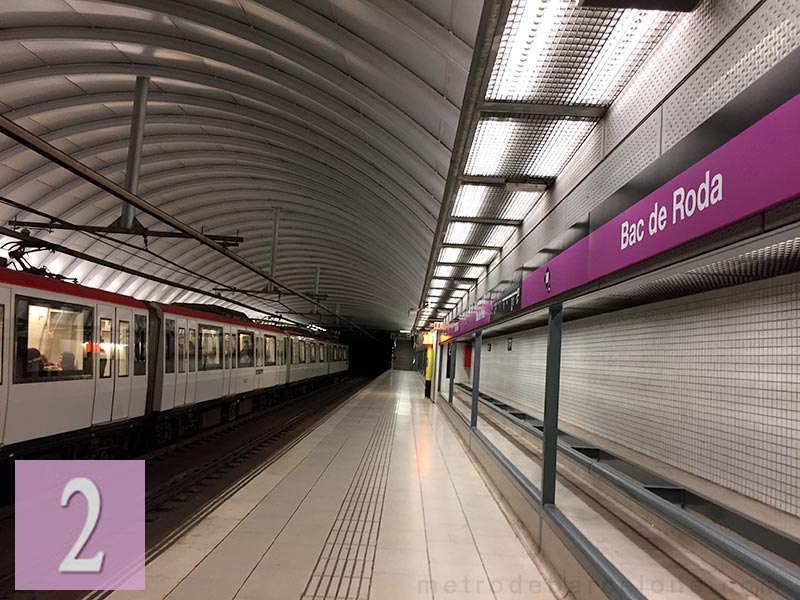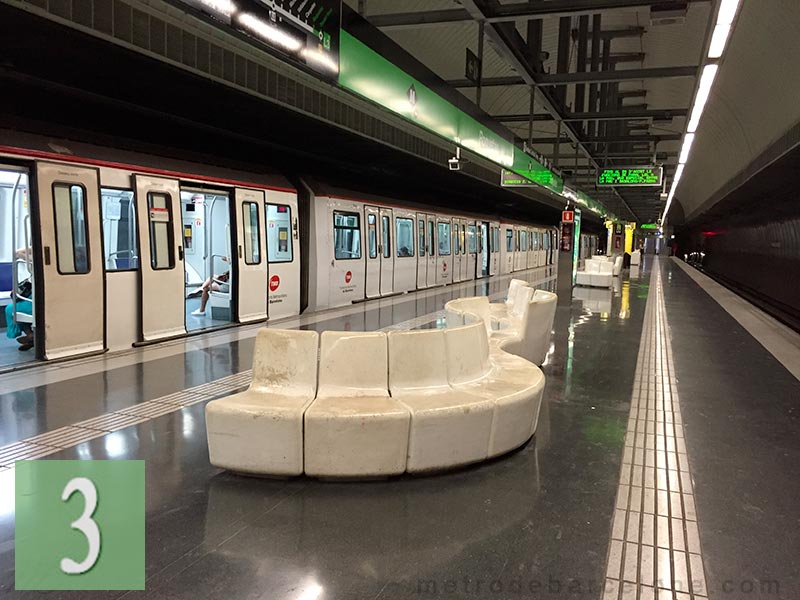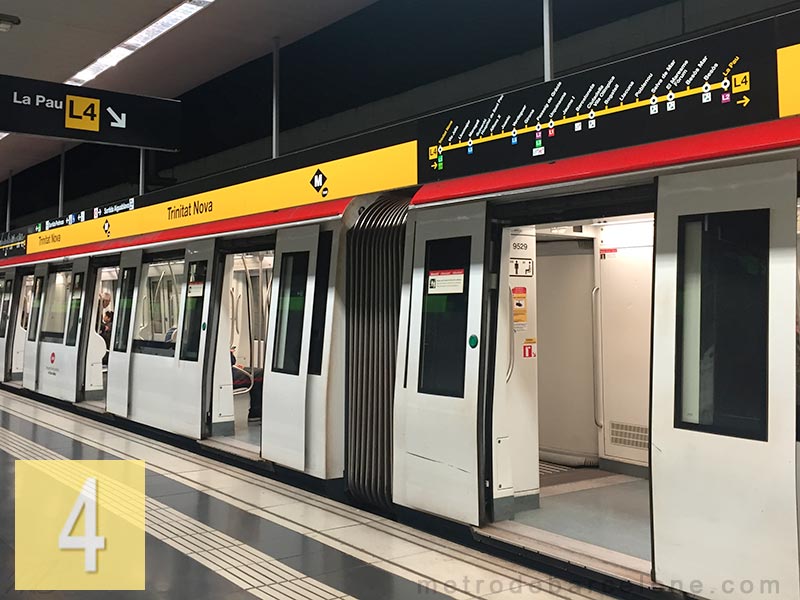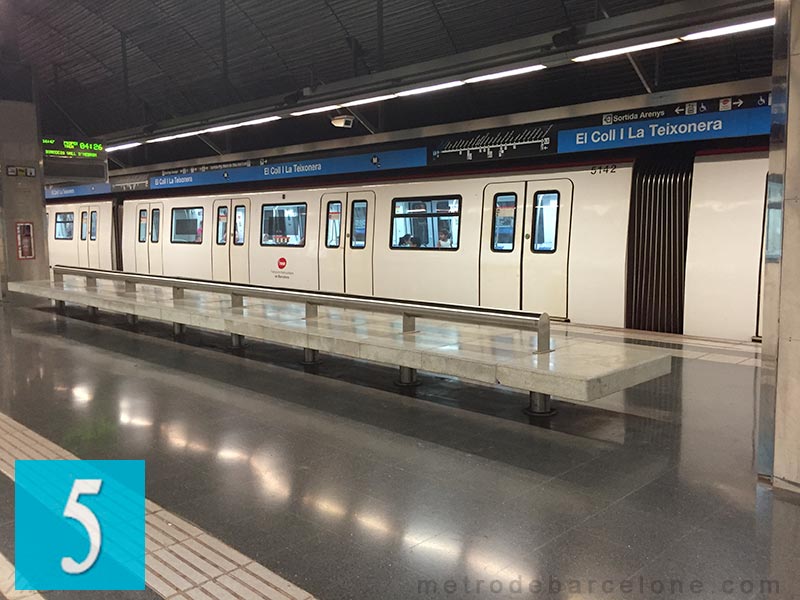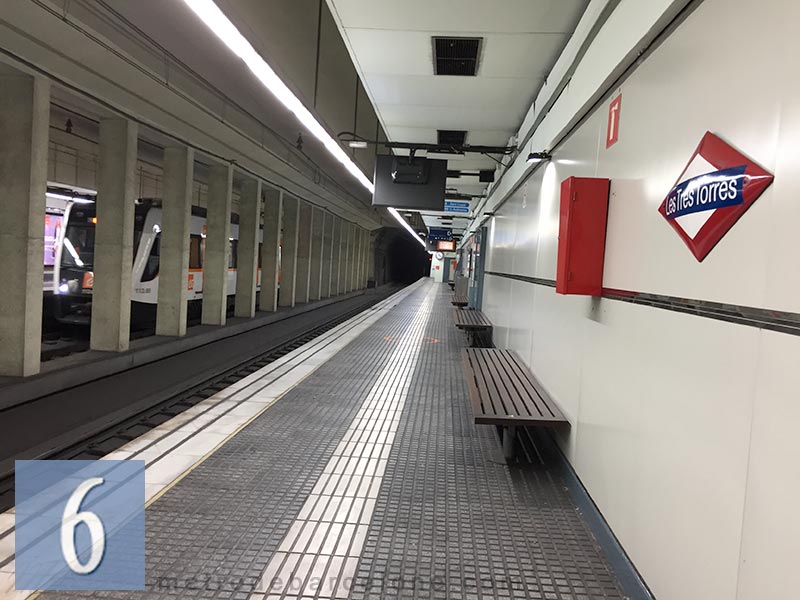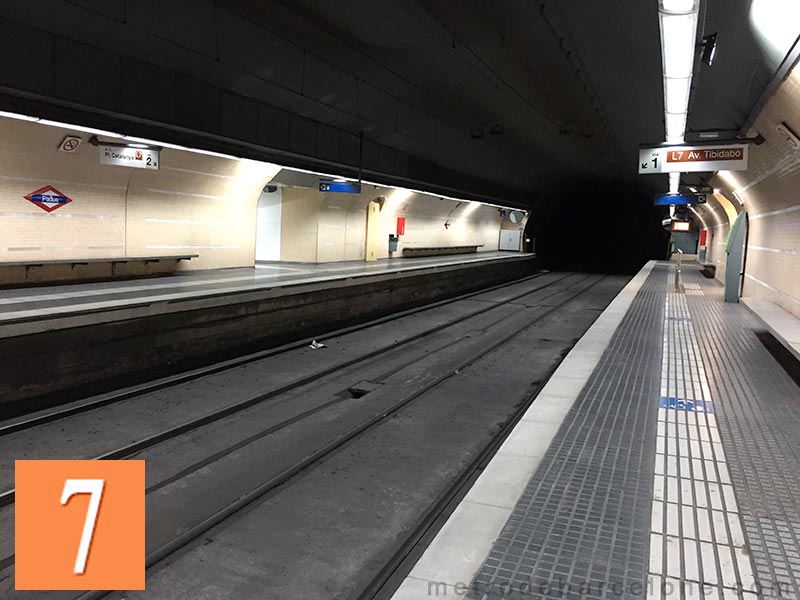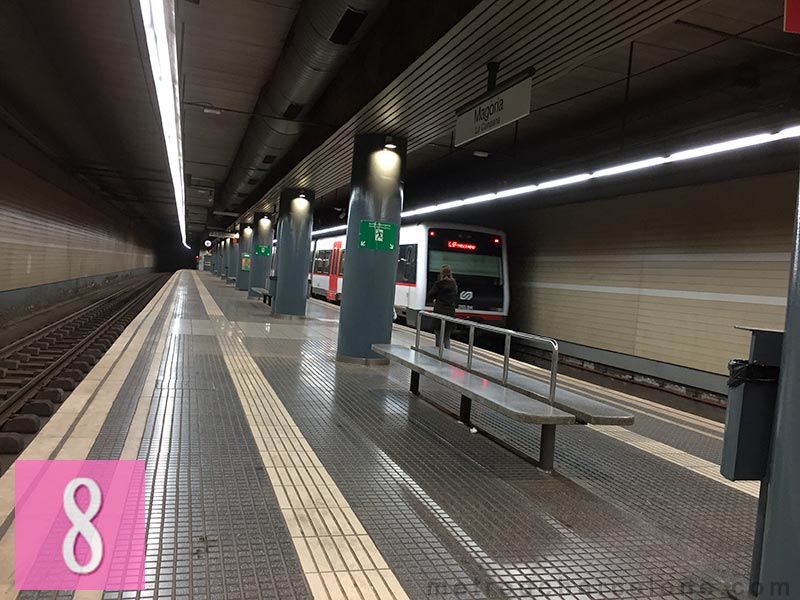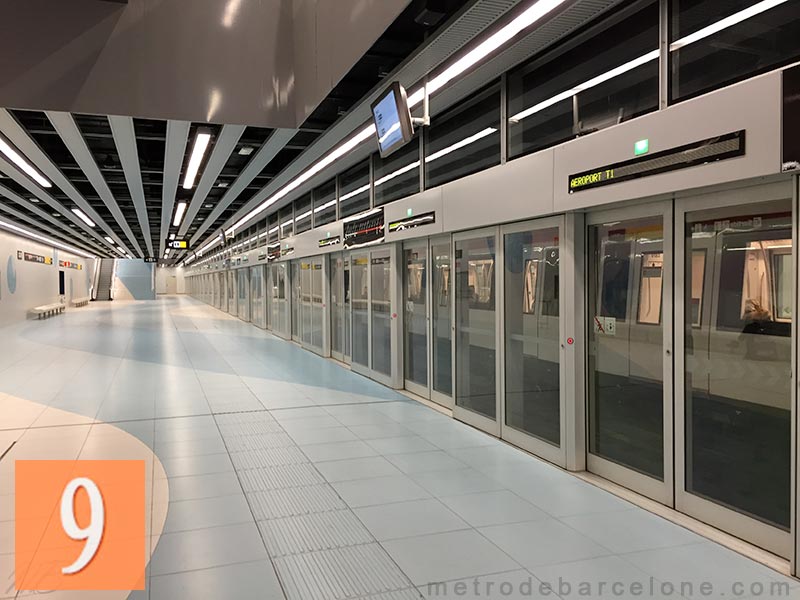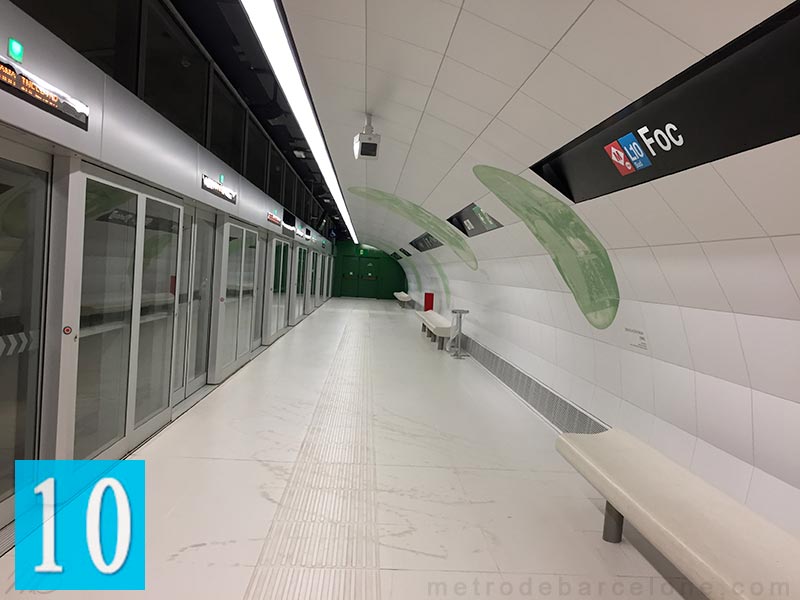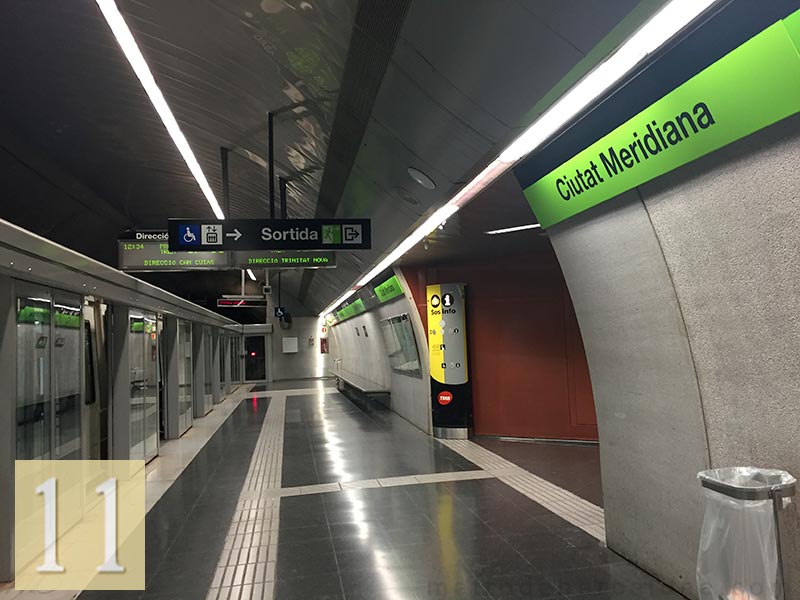
Barcelona quick guide
From its origins under the reign of the Romans to the present day, passing through the Middle Ages and modern times, after many wars, successions of civilizations and religions, the city of Barcelona, capital of Catalonia, has managed to preserve the richness of its heritage throughout its centuries of history.
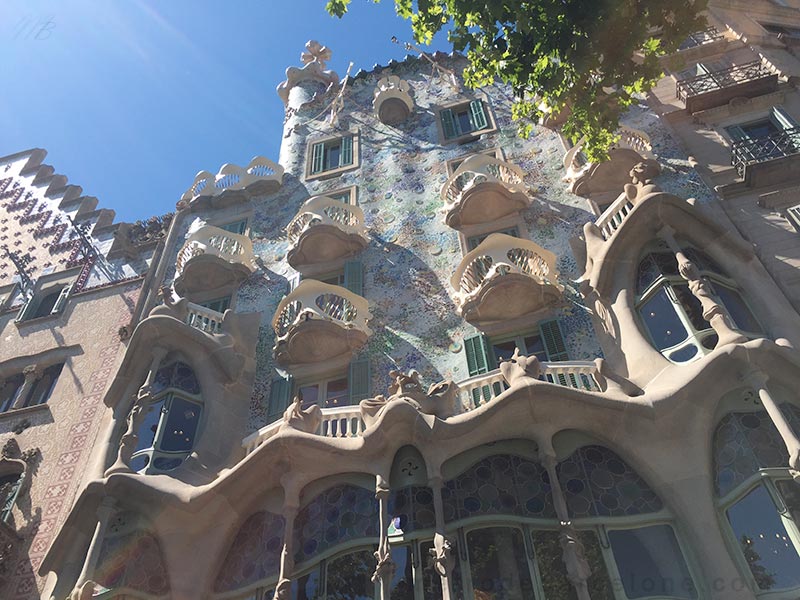
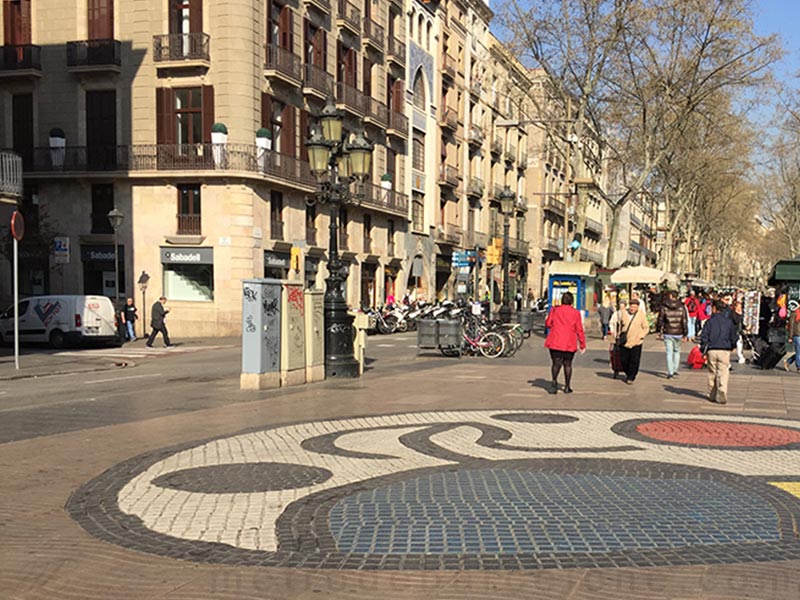
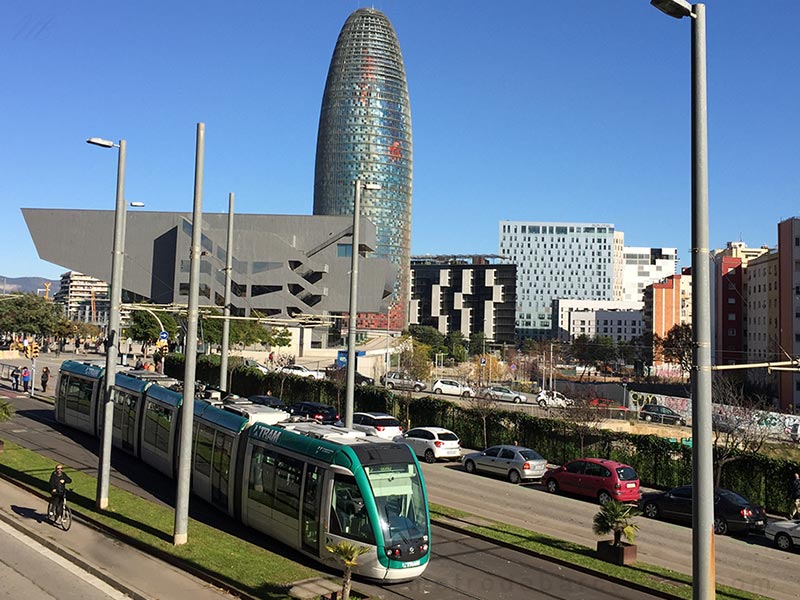
Bordered on the west by the huge Collserola mountain range, which lies between the rivers Llobregat and Besos, and the Mediterranean coast on the east side, the city of Barcelona has more than 5 million inhabitants and is the second largest city in Spain.
Barcelona is the centre of Catalonia's cultural interests, with artistic influences from Gaudi, Dali, and Picasso. Here, Castilian and Catalan share the two official languages of the capital of Catalonia.
Its climate, geographical location, as well as its museums, parks, squares, sculptures, monuments and architecture, which can be found in each of its neighbourhoods, make Barcelona a privileged tourist destination.
Trains, buses, metro, cable cars, funiculars and trams - Barcelona's public transport system offers a wide range of options for exploring the city.
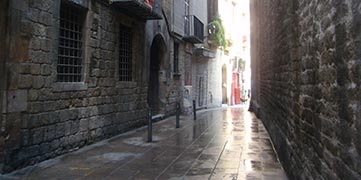
Gothic Quarter, the maze of alleys where the history of the city begins
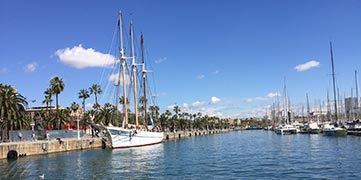
Puerto Vell, the oldest port in the city of Barcelona.
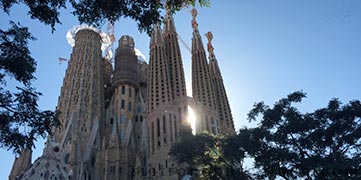
Sagrada Familia, the most visited monument in the city of Barcelona.

The parc Guell, the most famous of Barcelona's must-see parks.

Montjuic, the hill that houses many historical parts of Barcelona.
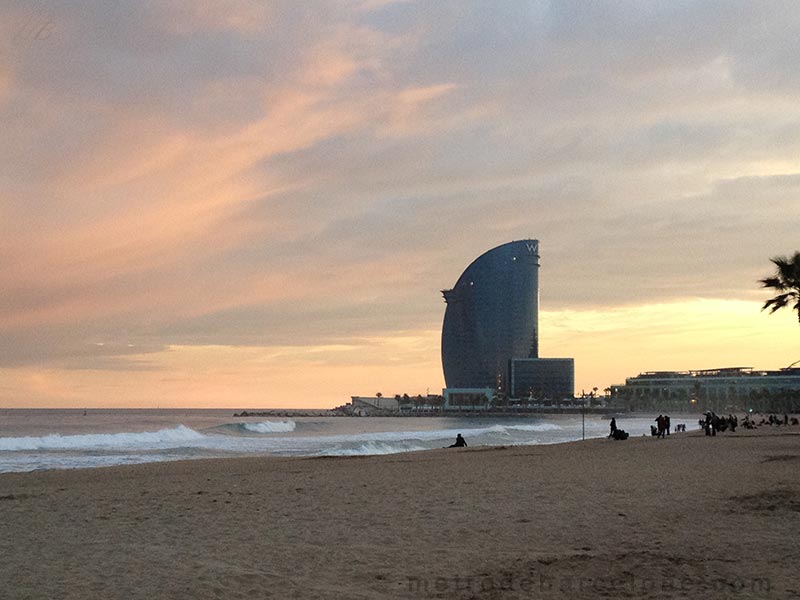
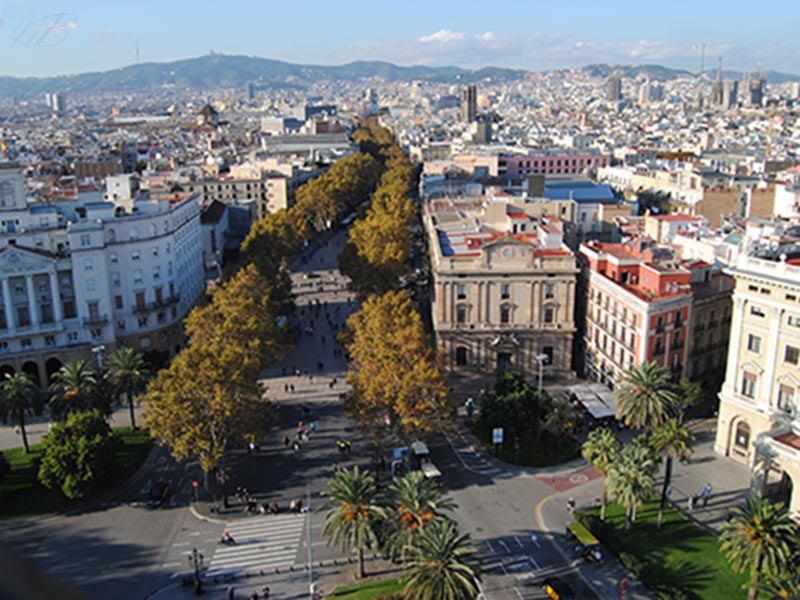
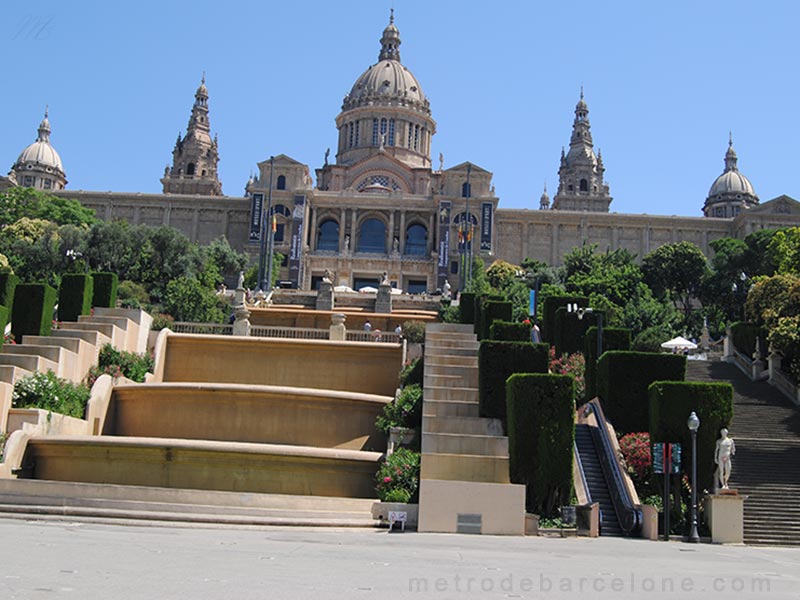
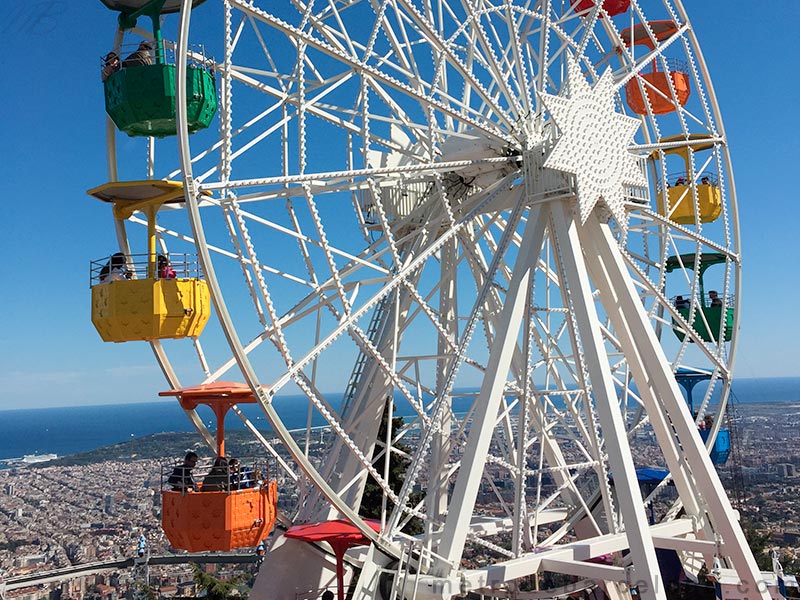
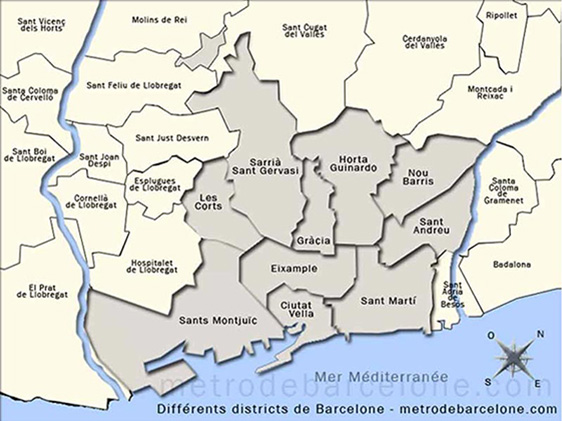
Neighbourhoods of Barcelona
The ten districts that share Barcelona's surface area are made up of neighbourhoods, some of which hide the most monuments, historical sites and tourist interests.
Among the most popular districts of Barcelona, such as "La Ciutat Vella" which contains the Gothic Quarter; the Eixample which protects the Sagrada Familia; "Sant Marti" where the beaches of Barcelona are located, or "Sants Montjuic" which houses, among other things, the remains of the 1992 Olympic Games as well as the Aniciennes arenes in Plaça Espanya, below is a more detailed presentation of the districts of Barcelona not to be missed during your stay in the Catalan capital.
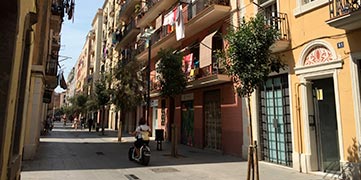
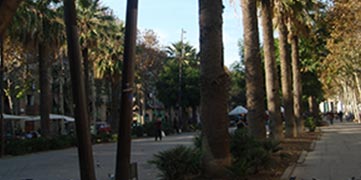
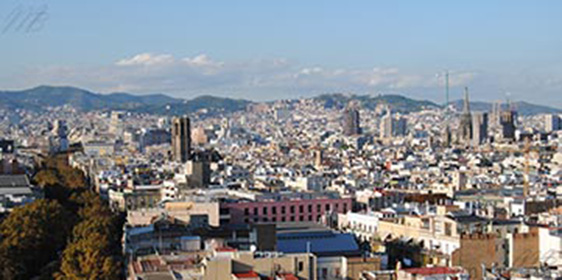
Barcelona Ciutat Vella
Divided between the districts of the Raval, Barceloneta, the Gothic Quarter and the Ribera, the Ciutat Vella (Old Town in Catalan) district is the very first district of Barcelona.
Surrounded by the districts of Montjuic, Eixample, Sant Marti, and the beaches on its eastern flank, the Ciutat Vella is the part of Barcelona that refers to the very famous Ramblas, Santa Eulalia Cathedral, Picasso Museum, Plaça Reial, Port Vell, and many others.


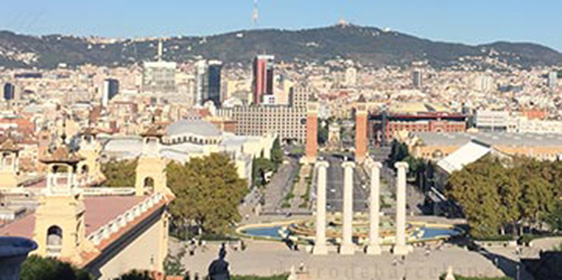
Barcelona Sants-Montjuïc district
Riparian with the districts of Ciutat Vella, l'Eixample, and Les Corts, as well as the towns of Hospitalet de Llobregat and El Prat de Llobregat, Sants-Montjuic is the southernmost district of Barcelona.
Famous for the remains of the 1992 Olympic Games, as well as the parks and museums it contains, Montjuic Hill is the most visited district in this district.
From the Espanya Industrial Park to the arenes of Plaça Espanya, the Sants-Montjuic district includes many tourist sites.
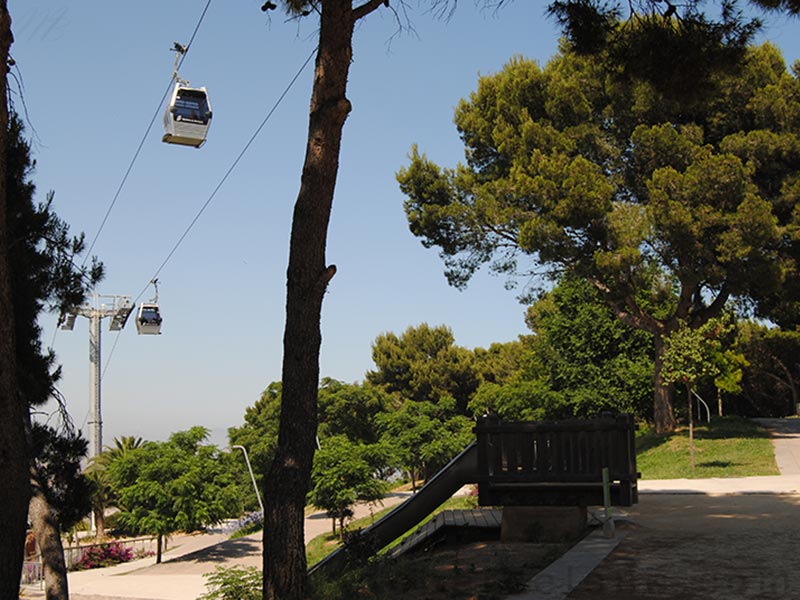
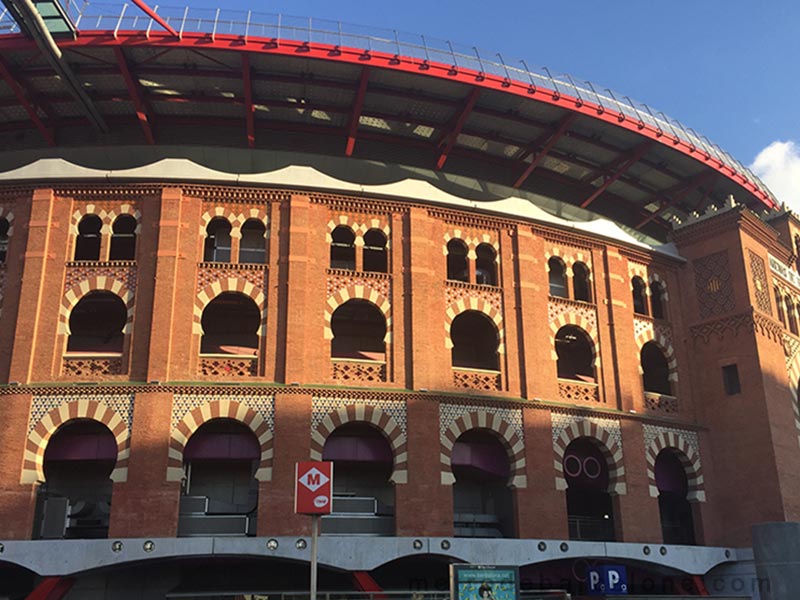
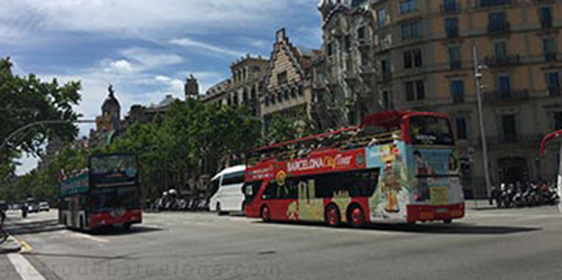
Barcelona Eixample district
As its name suggests, Eixample, which means extension in Catalan, marks the time when the ramparts of the city of Barcelona fell in order to expand to Gràcia.
Linked to almost all the districts of Barcelona, the Eixample is a maze of wide checkered streets that is divided into two parts: right and left; it is the district that protects the most visited monuments of Barcelona, such as the Sagrada Familia, the Casa Batllo, or the Casa Mila.

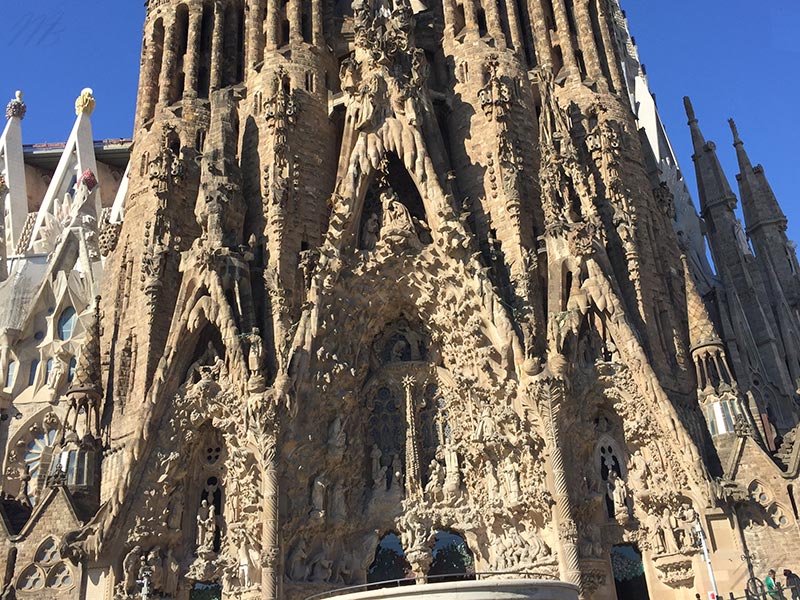
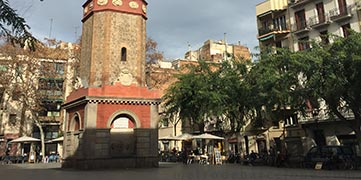
Barcelona Gracià district
What was once a beautiful little village on the outskirts of Barcelona connected to the city by the Passeig de Gracia, the Gracia district is nowadays one of the most visited districts of Barcelona.
Nestled between the Eixample, Sarrià, and Horta Guinardo, Gracià is not only famous for the few days of the year when the streets are dressed up for the Gracia festivities, but also for the numerous visits to the Guell Park which is located on the highest parts of Gracia.
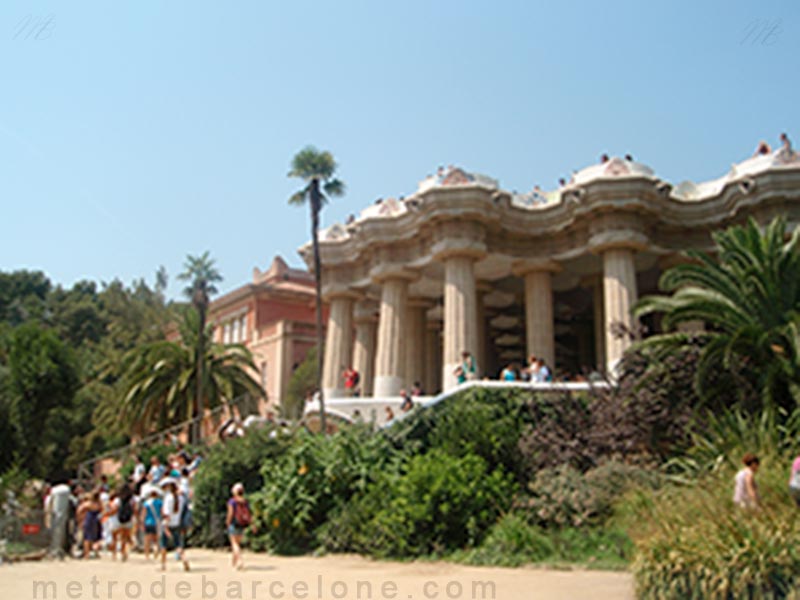
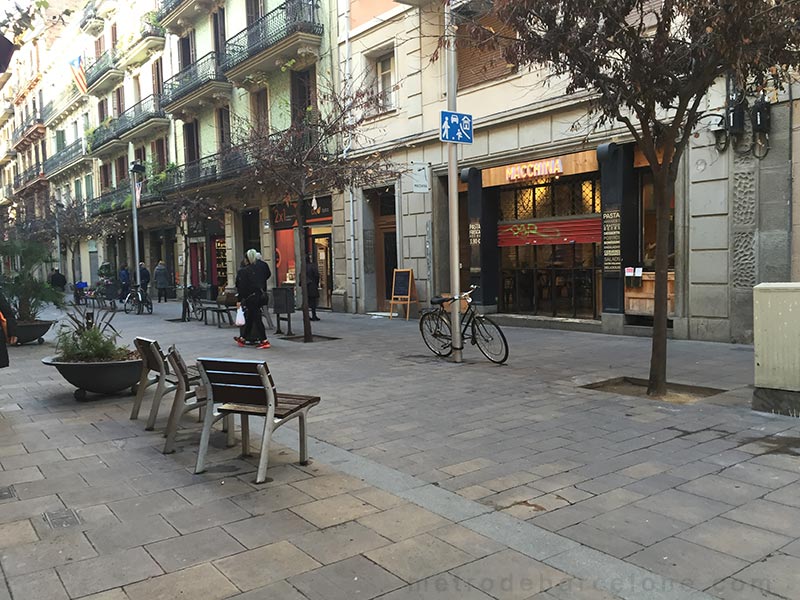
Not to be missed in Barcelona !
1. Monuments
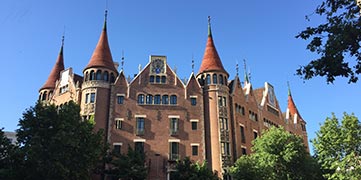
From the Sagrada Familia to Palacio Guell, via La Pedrera and Casa Batllo, what are the top Barcelona monuments not to be missed ?
2. Its Museums
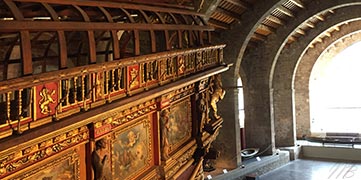
Art, architecture, science, war, navy and sport share the rich culture and history of Barcelona's many museums.
3. Parks
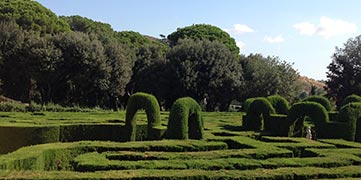
With themes, attractions, historical or UNESCO heritage, which are the most beautiful parks hidden on either side of Barcelona ?
4. Tourist attractions
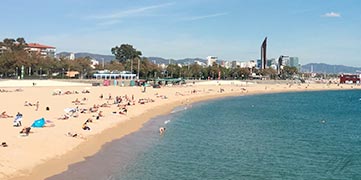
Between beach and mountains, from square to square and from avenue to alley, the city of Barcelona protects many tourist attractions.
Churches, basilicas, cathedrals, or castles, the city of Barcelona is full of emblematic squares and monuments that bear witness to a rich and varied cultural heritage, not to be missed during your stay in Barcelona.
Sagrada Familia
The Sagrada Familia, a minor Catholic basilica in Barcelona, is located in the Eixample district. This emblematic monument of the city, still under construction, is one of Antoni Gaudi's architectural enterprises.Casa Batllo
The Casa Batllo, whose large number of elements remind us of the human skeleton, is very easily remarkable on the Passeig de Gracia. The Casa Batllo is one of the many monuments of which Antoni Gaudi is the author.El Palau Guell
From the basement to the terrace, the five floors of Palazzo Guell, home of the wealthy industrialist Eusebi Guell, a few steps from the Ramblas, is one of the works of the famous Antoni Gaudi in which no detail leaves one indifferent.Columbus watchtower
The monument erected in memory of the famous navigator Christopher Columbus is a watchtower from which, once at the top of the column, the panoramic views over the whole city of Barcelona are impressive.The Casa Milà
The Casa Mià, also known as la Pedrera, which means stone quarry, is one of Antoni Gaudi's masterpieces and a UNESCO World Heritage Site. This huge house has the peculiarity of not having any right angles.Santa Eulalia Cathedral
Classified as a National Historic-Artistic Monument since 1929, the Metropolitan Basilica of the Holy Cross and Santa Eulalia Cathedral of Barcelona is permanently inhabited by 13 geese that protect the cloister.Santa Maria del mar
Dedicated to the Virgin of the Sea, the church of Santa Maria del mar (Saint Mary of the Sea), in Catalan Gothic style, is the result of a historical work of Barcelona to which the inhabitants of the Ribera district contributed.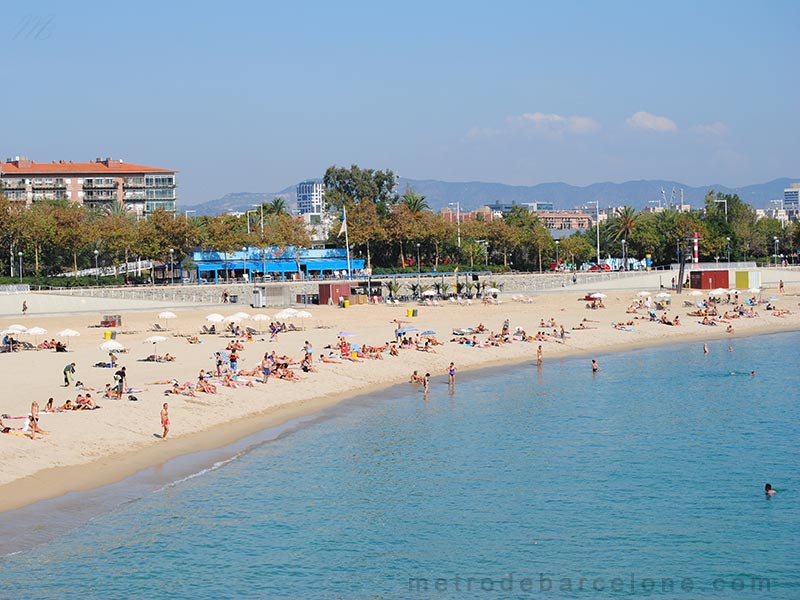
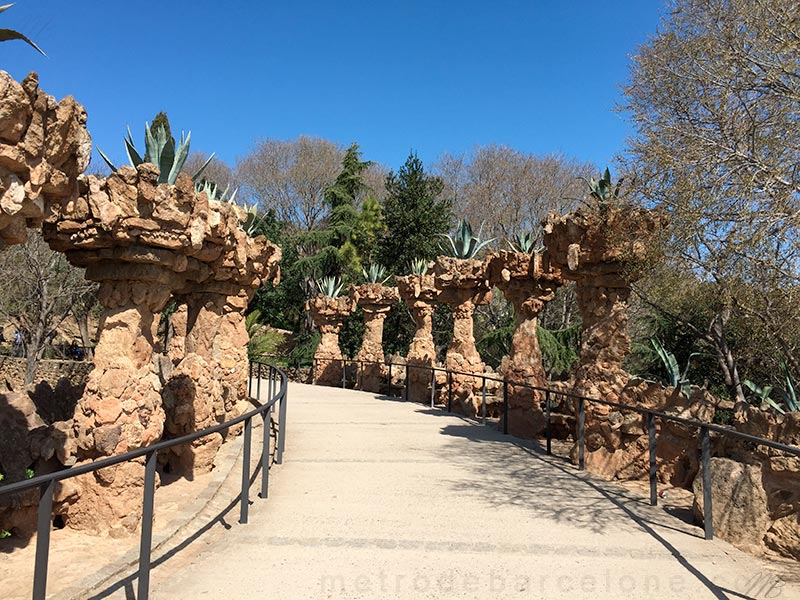

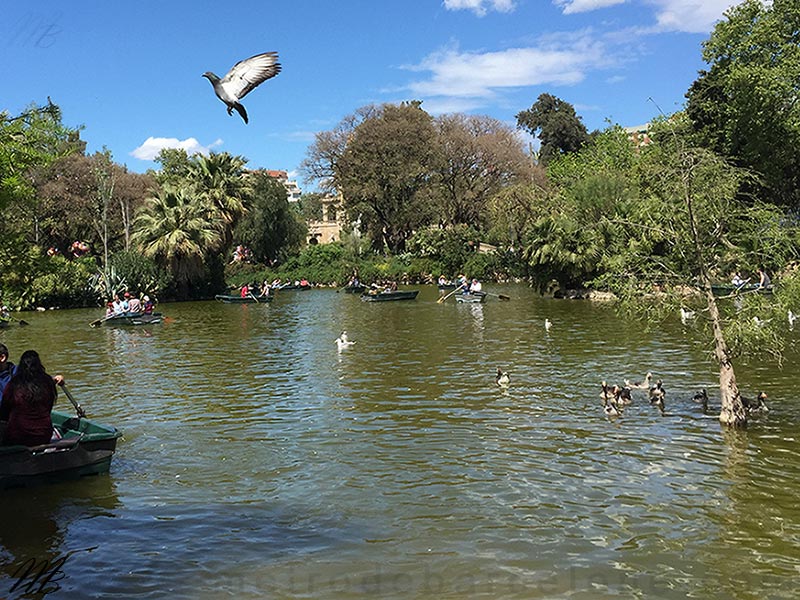


2. Among the museums of the city
No less than fifty museums, including art, architecture, science, war, marine, and sports, share the secrets of a culture rich in history, and of artists who have left an indelible mark on the city's heritage.

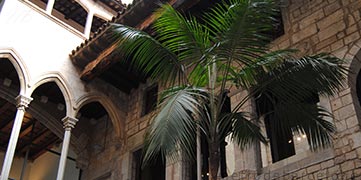
Picasso museum
A showcase of works by Pablo Picasso where photos, ceramics and paintings on display retrace the evolution of one of the most famous Spanish artists.
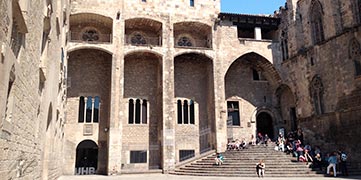
Barcelona History museum
The Barcelona History Museum takes you back in time over more than 2000 years of Barcelona's history.

National Museum of Catalan Art
Converted into the National Art Museum of Catalonia in 1934, the National Palace of Barcelona houses one of the most complete collections of Romanesque art in the world.
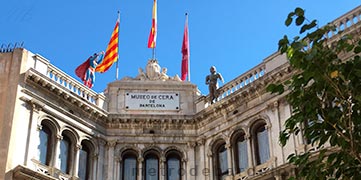
Barcelona Wax Museum
Located a few meters from the Drassanes metro station, at the end of the Ramblas, the Barcelona Wax Museum houses the statues of hundreds of personalities.

Barcelona Disseny Museum
Housed in the Disseny Hub building on Place de les Glories, the Barcelona Museum of Design houses 4 permanent exhibitions dedicated to the culture of the object, decorative art and design.
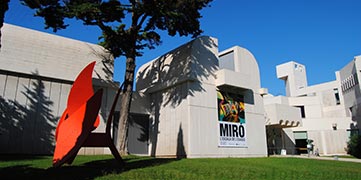
Joan Miró Foundation
The Joan Miro Foundation, located on the heights of Montjuic Hill, offers an exhibition of various paintings, sculptures and drawings by the artist Joan Miro.
3. Barcelona's most beautiful parks
With themes, attractions, historical or UNESCO heritage, all designed by the city's greatest architects, discover the many parks hidden on either side of Barcelona's districtsParc Guell Barcelona
Classified as a UNESCO World Heritage Site since 1994, Parc Guell, one of the masterpieces of the famous Antoni Gaudi, is a huge garden divided into several floors littered with alleys, columns and magnificent mosaics; it is also the most visited park in Barcelona.
Ciutadella park
For a guaranteed change of scenery in the heart of Barcelona, the 17 hectares of Parc de la Ciutadella, strewn with museums, gardens, and an artificial lake from the Arc de Triomf to the Barcelona Zoo, offer beautiful walks to reach the Olympic port and the beaches of Barcelona.
The park of the labyrinth
The Labyrinth of Horta, the oldest park in Barcelona where love and mythology share the hectares of gardens surrounding a magnificent maze of greenery, is one of the must-see parks in Barcelona.
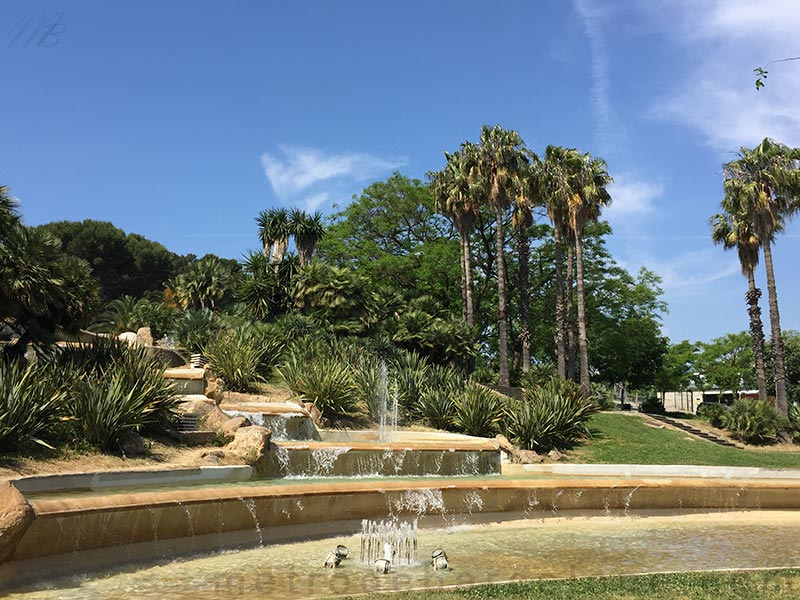
Montjuic
The 184-metre-high Montjuic Hill, located southwest of Barcelona, offers breathtaking panoramic views of the port and the old town (Ciutat Vella). Montjuic is above all a huge green space.
Guinardo
The Parc del Guinardo, one of the largest green spaces in Barcelona, where children's areas, historic gardens, a forest, sculptures and fountains share the alleys leading to the Carmel bunkers, from where the views of Barcelona are breathtaking.

Pedralbes gardens
At the foot of Avenida Diagonal, the gardens of Pedralbes form a magnificent park bordering the Royal Palace of Pedralbes, where statues and fountains accompany you in the shade of the trees.
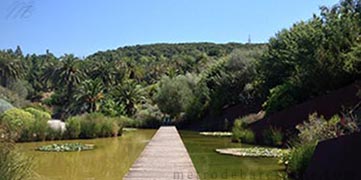
Botanical garden
The botanical garden of Barcelona extends over several hectares where a multitude of plant varieties share the aesthetics of the site refer to the Mediterranean vegetation in Catalonia
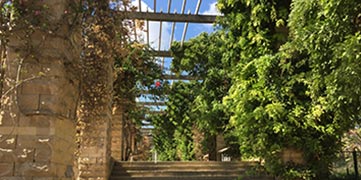
Barcelona Joan Miró park
Located at the foot of Barcelona's bullring, the Joan Miro Park, formerly known as the Escorxador Park, is made up of a wide variety of vegetation on different floors; it is the ideal place to take a break before setting off on the Montjuic hill.
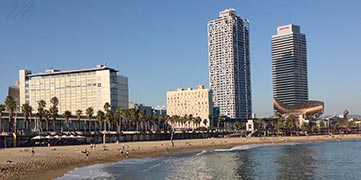

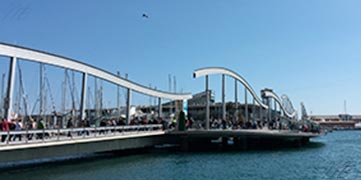

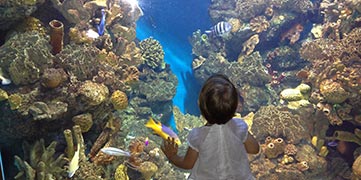

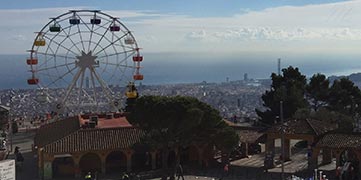
Barcelona beaches
Bogatell, Barceloneta, Nova Icària, or Sant Sebastià, as many names as choices for a relaxing activity on the beaches of Barcelona where restaurants, bars, and entertainment lead the atmosphere.
Barcelona beaches virtual tourBarcelona's Rambla
A meeting point between the unmissable Plaça Catalunya and the old port of Barcelona (Port Vell) where artists, painters, souvenir shops, restaurants and musicians share the 2 kilometres of the busiest pedestrian avenues in the Catalan capital.
Discover the Barcelona busiest avenueThe Barcelona's Plaça Catalunya
Intersection of some of the most beautiful and unmissable avenues in Barcelona like the Rambla, Paseo de Gracia, Rambla Cataluña and Puerta del Ángel, Plaza Cataluña is the most famous and crowded of all the squares in Barcelona.
Virtual tour of Barcelona's most famous squareBarcelona Gothic quarter
A labyrinth of alleys where museums, churches, Roman research and architecture reflect the history of Barcelona's oldest district. Located between the Born and Raval districts, the Gothic quarter stretches from the old port to the unmissable Plaça Catalunya.
Barcelona's most popular district virtual tourThe Port of Barcelona
The Port Vell, (one of Barcelona's marinas) is the oldest port in the city. Bordered by a very pleasant promenade that extends from Plaza Colon to Barceloneta, walk along the Port Vell to reach the beaches of Barcelona.
Walking around the old port of BarcelonaBarcelona Plaza Real
The result of a project to convert an old convent, the Plaza Real of Barcelona, which is on the right as we continue up the Ramblas towards Plaza Cataluña. Composed mainly of bars and restaurants, where you can take a break in the shade halfway between Plaza Cataluña and the old port, Plaça Reial is the only arcaded square in Barcelona.
Photos of one of the most beautiful squaresBarcelona aquarium
No less than 11,000 specimens of 450 different species distributed in 35 aquariums are represented as faithfully as possible to their marine environment in the Barcelona Aquarium. At Moll de Espanya s/n Port Vell direction, sea urchins, sharks, turtles, eels and all the most beautiful species of the sea bed await you at the Barcelona Aquarium.
Discover the most beautiful species of the seabedBarcelona zoo
Our animal friends are also part of the must-see places in the city of Barcelona. A few metres from the Ciutadella Vila Olimpica underground station, a large number of animal species can be found in the Barcelona Zoo.
Say hello to the inhabitants of Barcelona ZooEl Tibidabo
Open since 1899, Tibidabo is the oldest amusement park in Spain. Built on the side of a mountain on 6 levels, the Tibidabo offers exceptional views of Barcelona in addition to its attractions for the whole family.
Virtual walk in the Barcelona amusement parkFC Barcelona stadium
Come and experience the Barça atmosphere at Camp Nou. With a capacity of more than 99,000 seats, the FC Barcelona stadium, located in the Les Corts district of Barcelona, is one of the largest stadiums in Europe.
Explore Barcelona's football team stadium
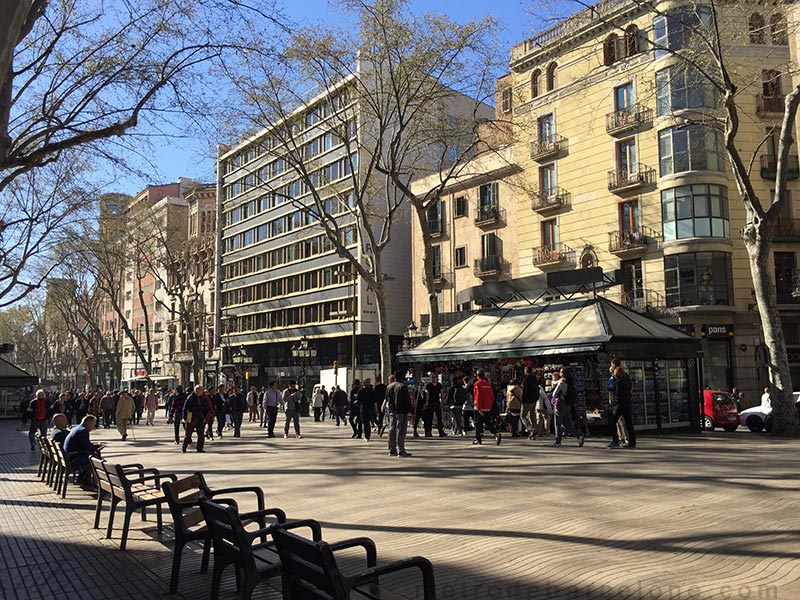

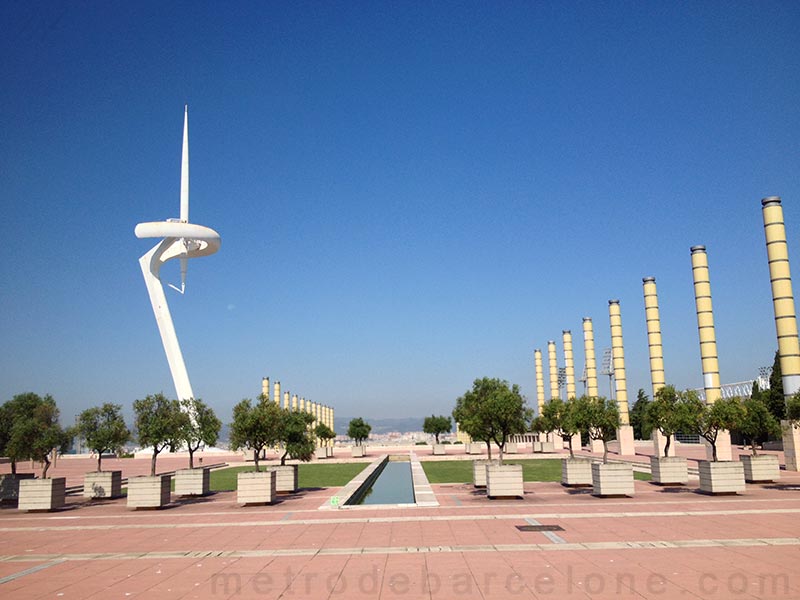
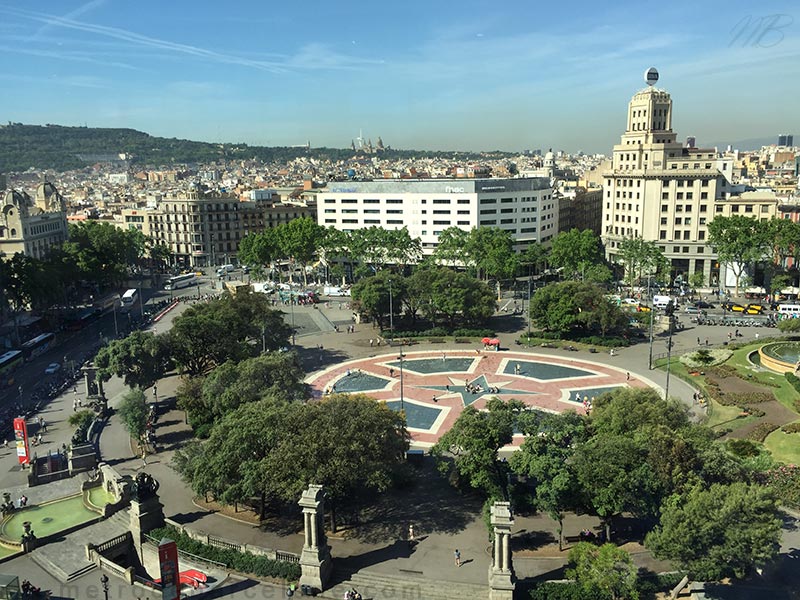


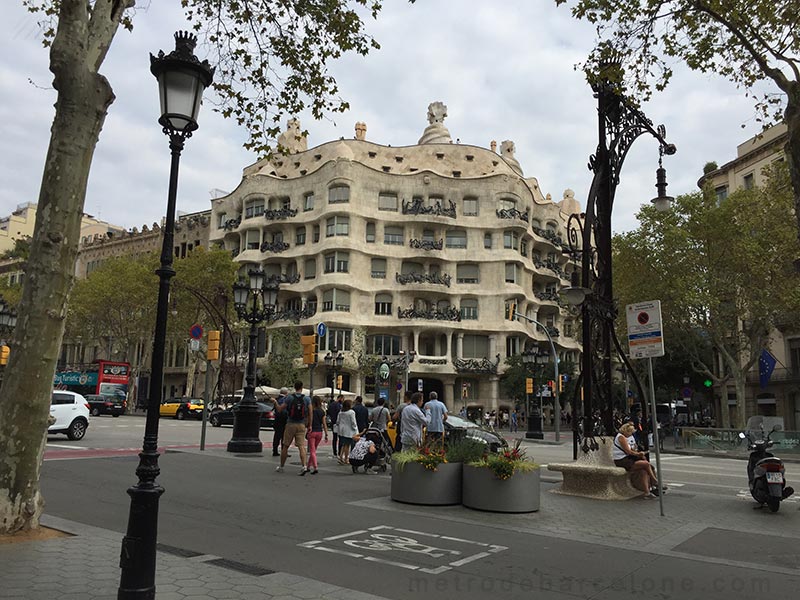
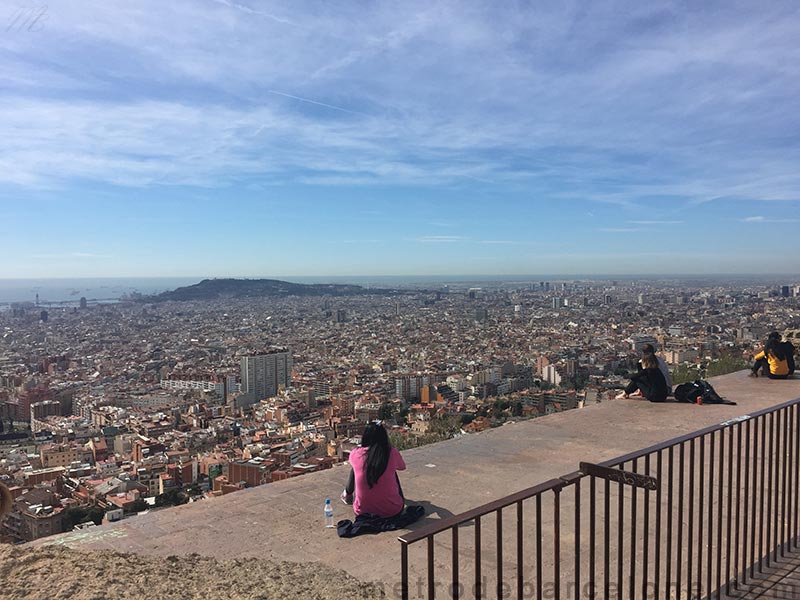
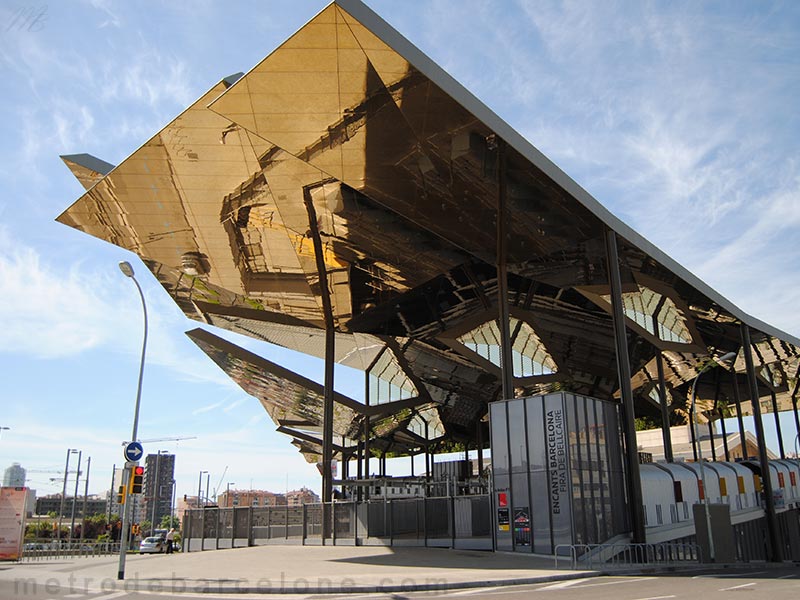
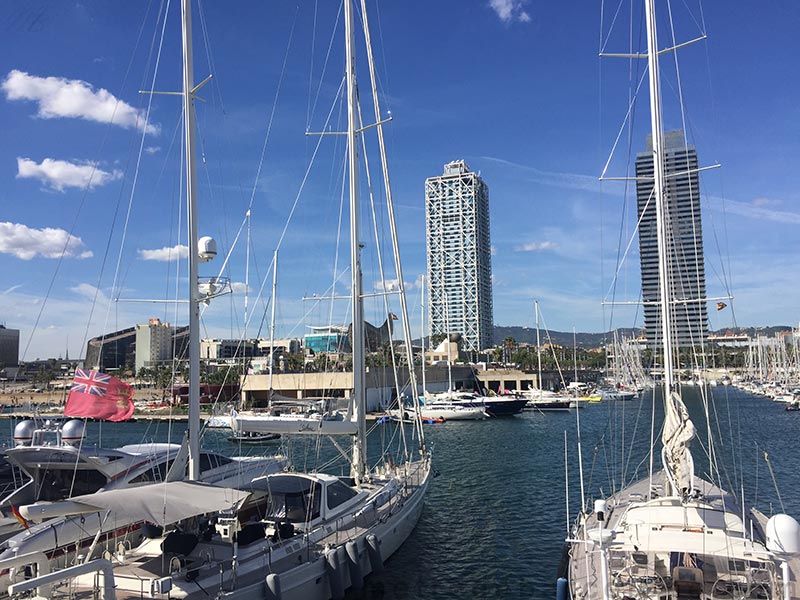
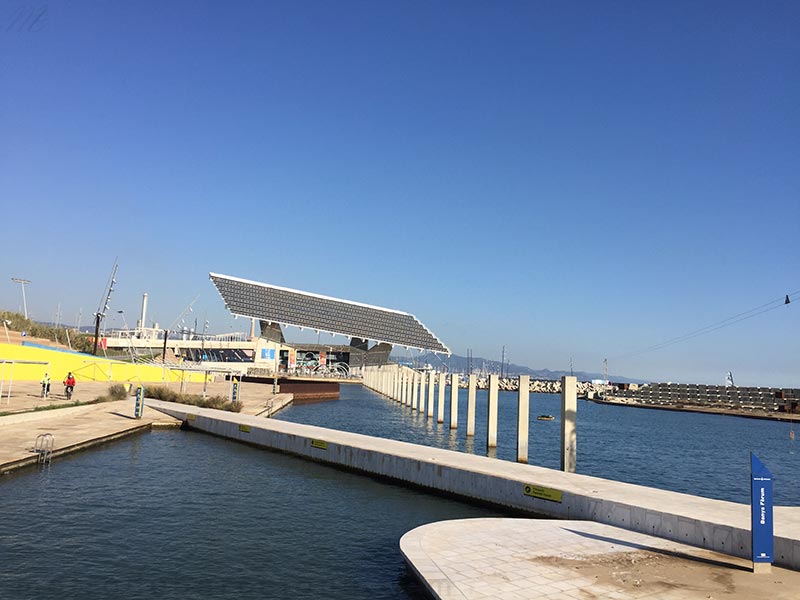
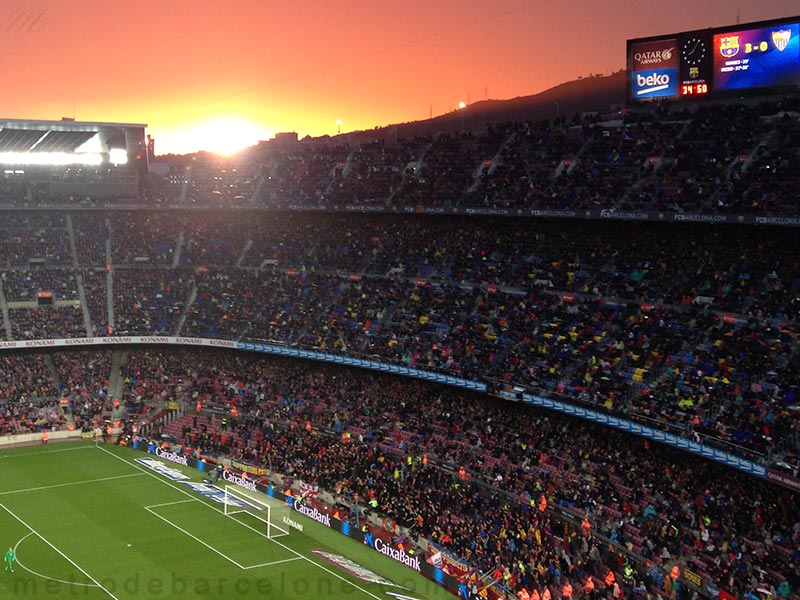

Barcelona transports
The city of Barcelona has an extensive network of buses, trams and trains, but the easiest way to get from one point to another in the city is by metro. In total, the city of Barcelona has 12 metro lines easily recognizable by their color code.With its wide time slots and a fare system that easily adapts to all types of stays, the Barcelona metro is the most recommendable means of transport for all your journeys around the Catalan capital.
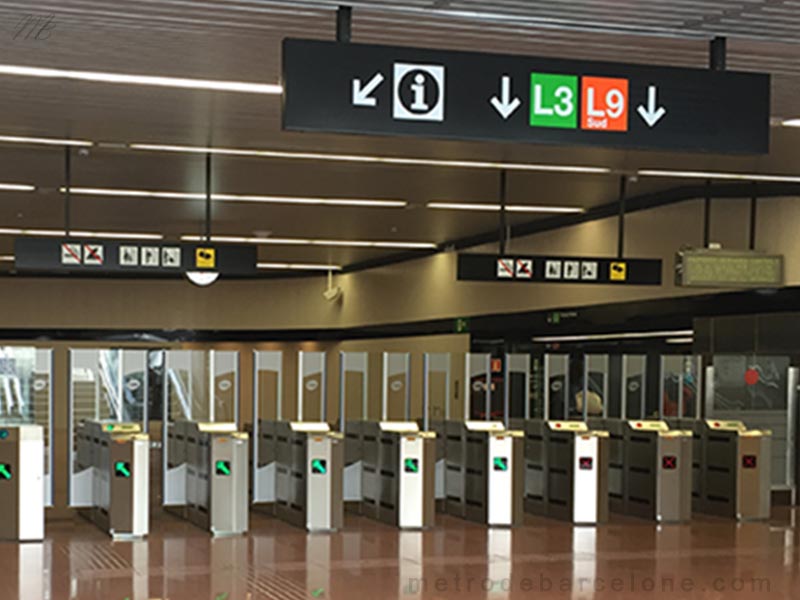
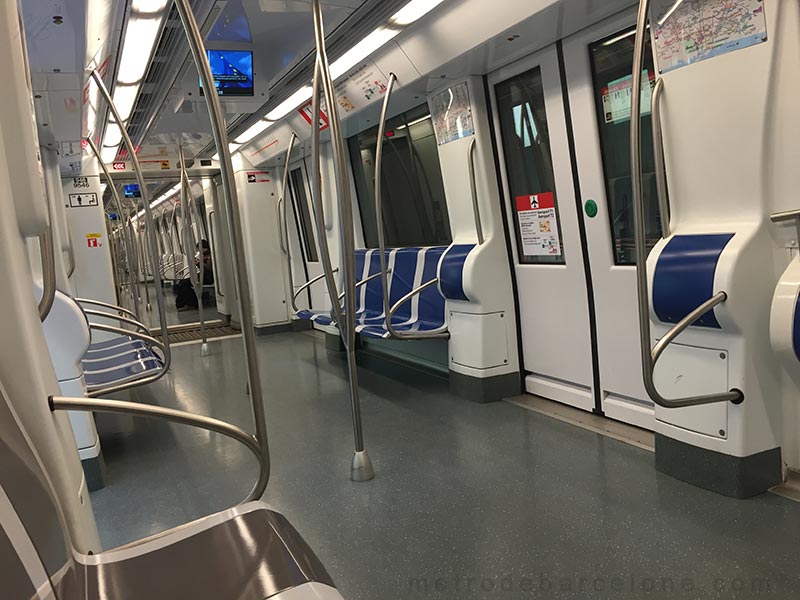
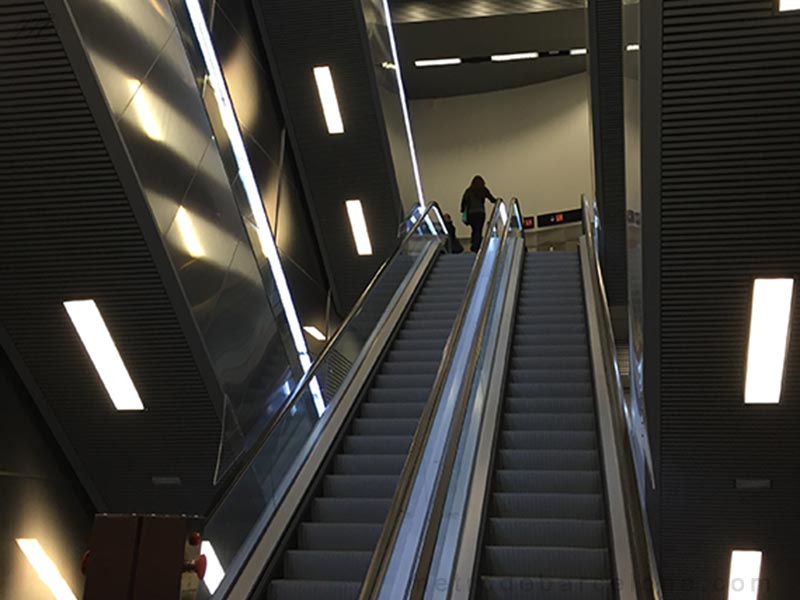
Barcelona metro
Barcelona metro fares range from a single ticket valid for a single journey to a card valid for 90 days, ranging from €2.15 to €142 or more depending on the area. Tickets are available at the ticket machines in each metro station and on the tram platforms and give access to the bus, tram, suburban train and metro.
The different Barcelona transport tickets also include the 10-trip card, the 50 and 70-trip cards, and 1 to 5-day passes that offer easy travel around the city. Some tickets are personal, such as the T-Mes, the T-50-30 or the Hola Bcn cards, and others can be shared by several people, such as the T-10 and the 70-trip card.
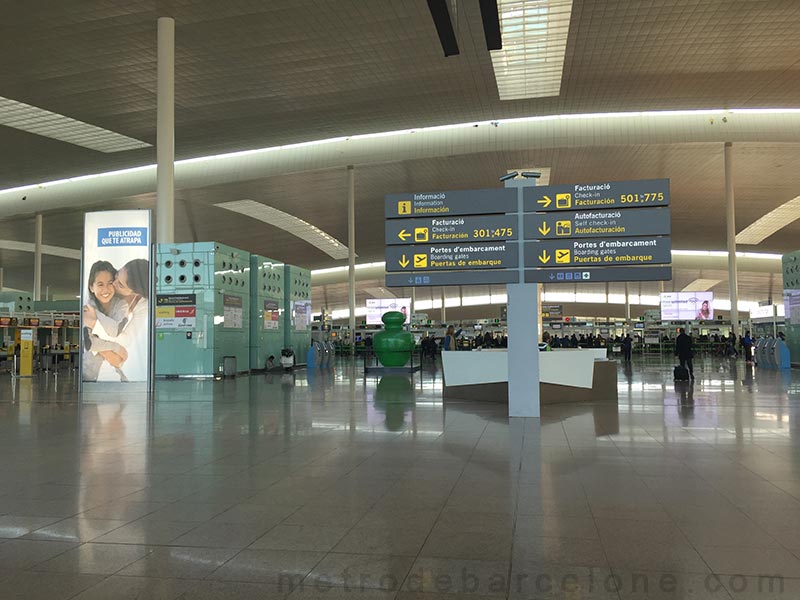
From Airport
Barcelona city centre is only 15 km from the airport and is easily accessible from terminals T1 and T2 by train, bus, taxi and the Barcelona metro line 9 which leads to the Zona Univesitaria.
Airport of Barcelona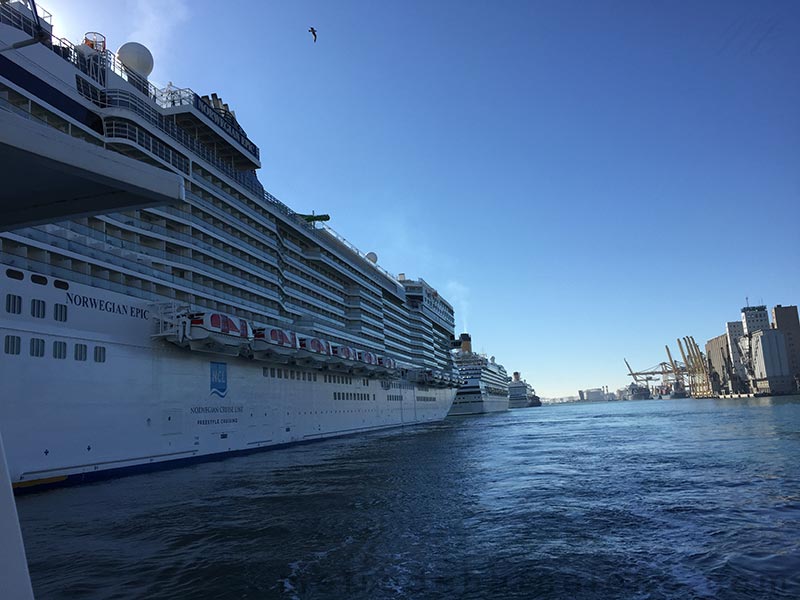
From the port
If you are one of the passengers on a cruise ship calling in Barcelona, find out on which dock the ship will drop anchor and how to get to Barcelona centre and its main tourist attractions.
Barcelona cruise port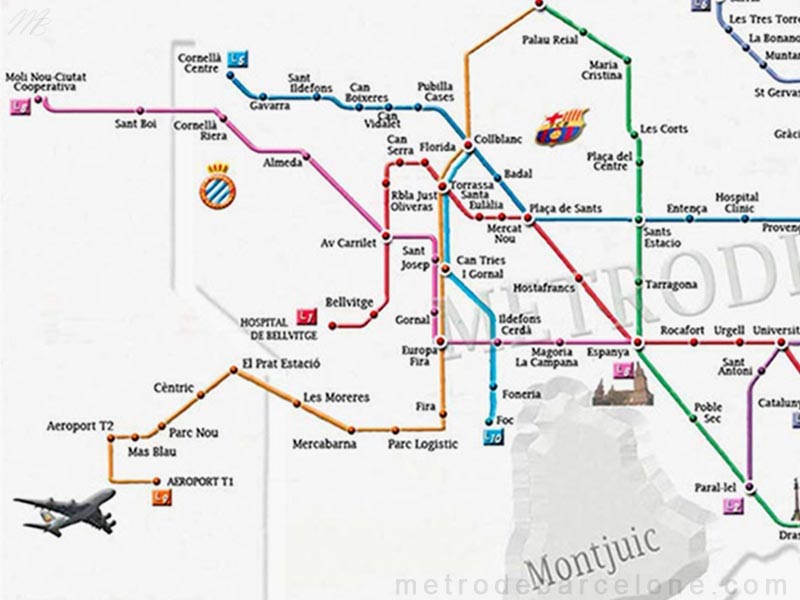
Barcelona metro map
Pdf o jpg, Click on the Barcelona metro map and discover the 12 Barcelona metro lines that will show you how to prepare your route from one point to another in the city.
Barcelona metro guide
Barcelona metro tickets

Barcelona Metro hours
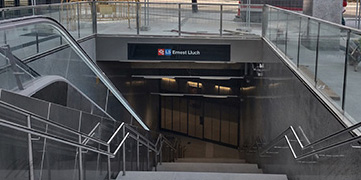
Barcelona metro map
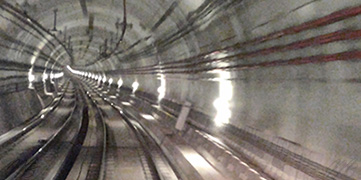
 From the most beautiful parks to city's squares, monuments and tourist attractions, which metro to choose and where to get off among Barcelona's 183 metro stations.
From the most beautiful parks to city's squares, monuments and tourist attractions, which metro to choose and where to get off among Barcelona's 183 metro stations.
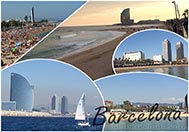 metrodebarcelone.com, your Barcelona travel guide
metrodebarcelone.com, your Barcelona travel guide
